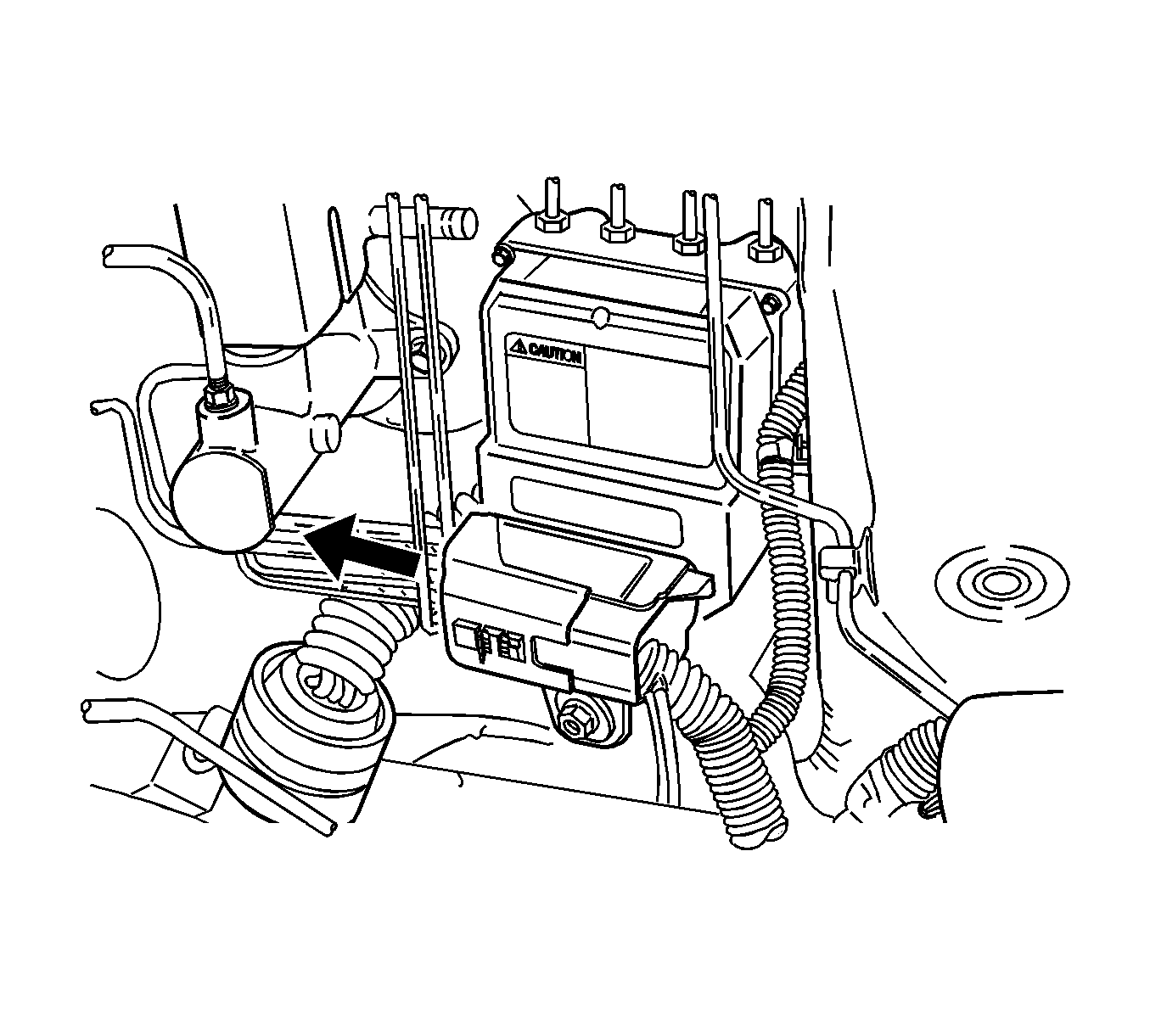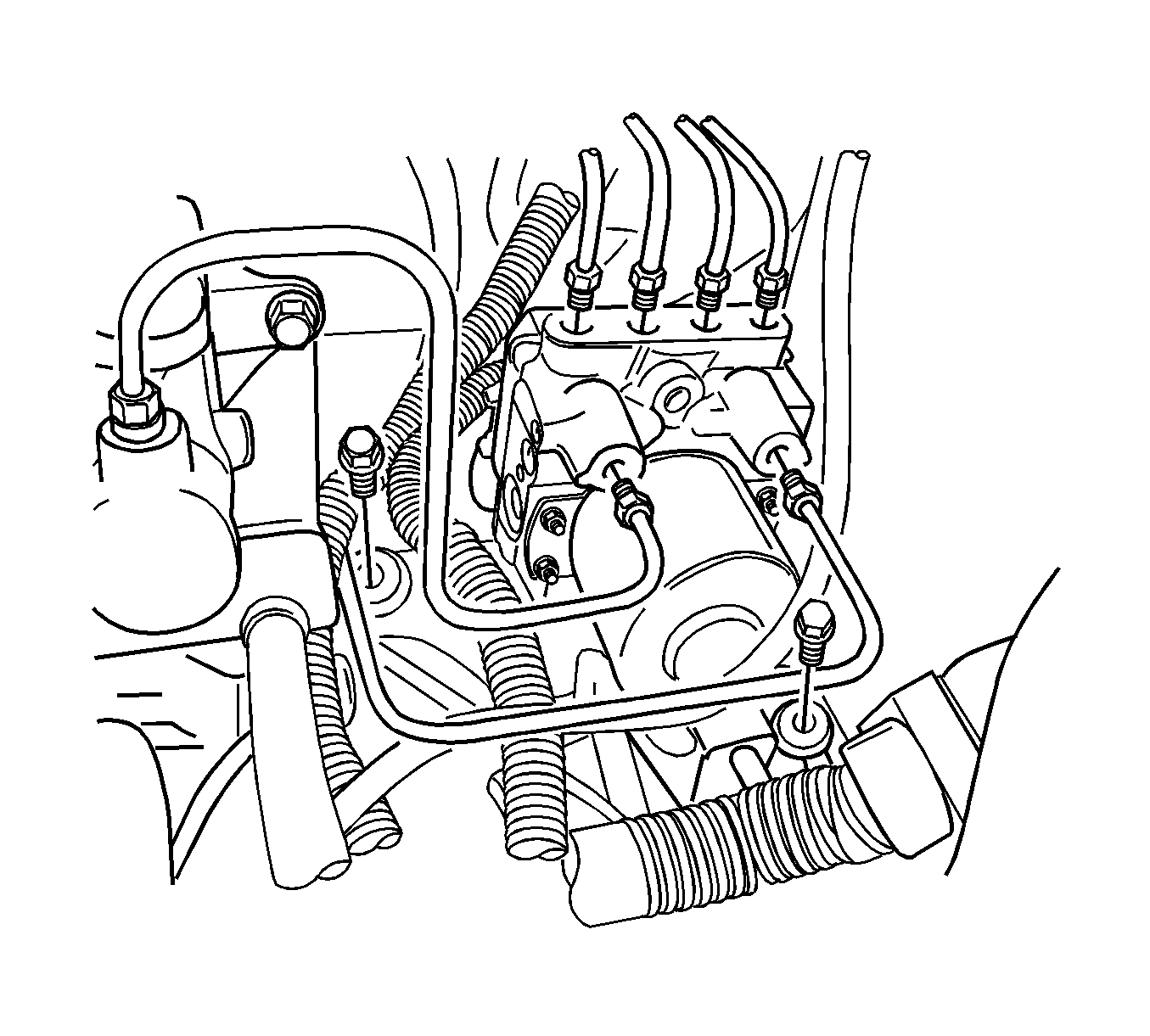Removal Procedure
- Disconnect the negative battery cable.
- Remove the cooling surge tank. Refer to Radiator Surge Tank Replacement in Engine Cooling.
- Disconnect the ABS wiring harness connector from the socket on the electronic brake control module (EBCM).
- Cover the connector and the socket with shop cloths to protect them from brake fluid.
- Remove the brake pipes fitting nuts from the hydraulic unit.
- Remove the mounting bracket bolts on the hydraulic unit.
- Remove the DBC 7 ABS assembly.
Caution: Refer to Battery Disconnect Caution in the Preface section.

Notice: Do not allow calipers to hang from the flexible hoses. Doing so can damage the hoses.
Important: To guarantee uniform braking on both sides, both rotors must have identical surfaces regarding smoothness and scoring depth. For this reason, always replace both rotors.

Important: Take care not to allow air into the hydraulic unit or into the brake pipes from the master cylinder. If air gets into the hydraulic unit, it will require a bleeding procedure using a scan tool programmed for the DBC 7 ABS system. As long as no air enters the hydraulic unit, a simple bleeding procedure is all the system will require.
Installation Procedure
- Install the DBC 7 ABS assembly.
- Install the mounting bracket bolts on the hydraulic unit.
- Install the brake pipes fitting onto the hydraulic unit.
- Connect the ABS wiring harness connector to the socket on the EBCM.
- Install the cooling surge tank. Refer to Radiator Surge Tank Replacement in Engine Cooling.
- Connect the negative battery cable.
- Add new brake fluid.
- Bleed the brake system.
- Inspect the brake system for leaks.

Notice: Refer to Fastener Notice in the Preface section.
Tighten
Tighten the bolts to 22 N·m (16 lb ft).
Tighten
Tighten the nuts to 16 N·m (12 lb ft).

